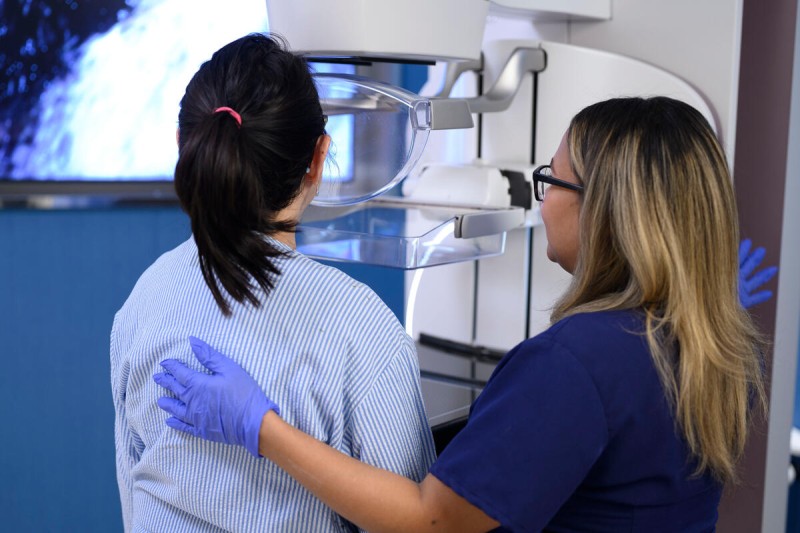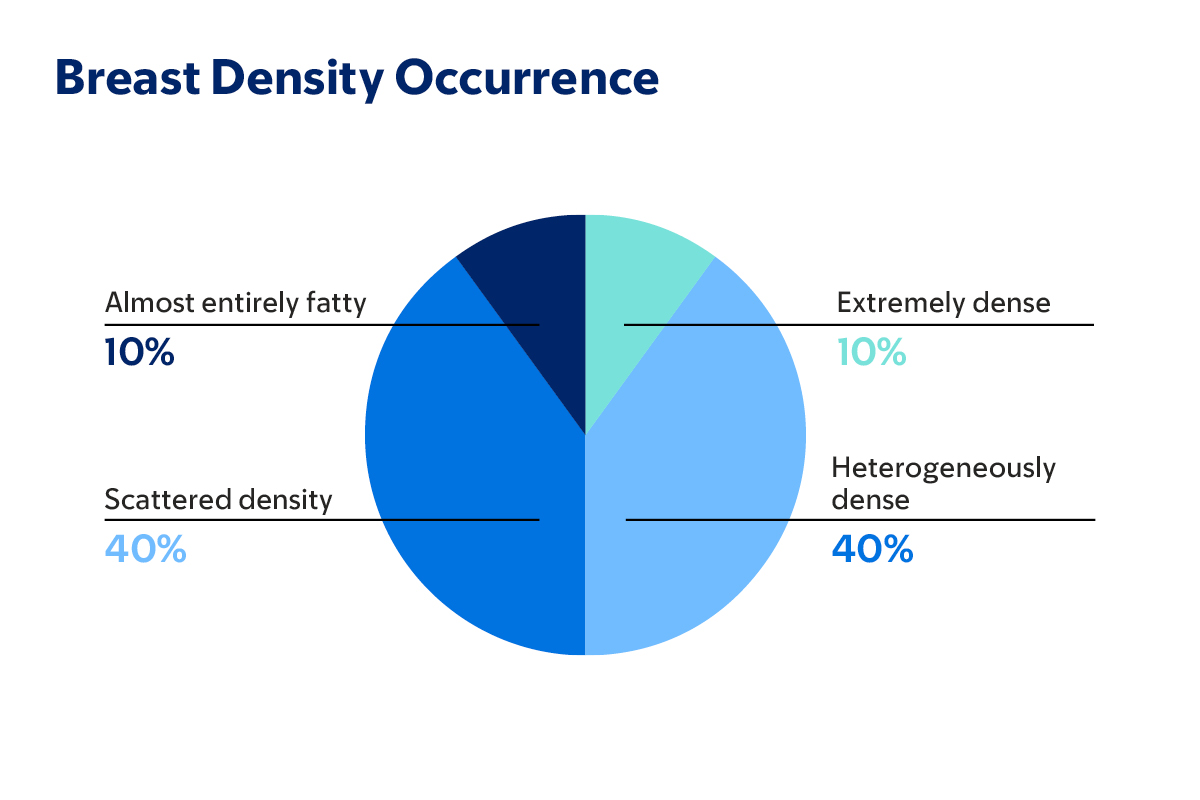
Having dense breasts is a risk factor for breast cancer. But how do you know if you have dense breasts, and how should it affect the way you approach screening for the disease?
Radiologist Elise Desperito, MD, Director of Breast Imaging at the MSK Ralph Lauren Center, shares what you need to know about breast density and how it affects your breast cancer risk.
What are dense breasts?
Breasts are made up of several types of tissue:
- Glandular tissue, which includes the breast lobules and breast ducts.
- Fibrous tissue, which is supportive connective tissue.
- Fatty tissue, which fills in the spaces between glandular and fibrous tissue.
Doctors refer to all nonfatty tissue as fibroglandular tissue. People with dense breasts have more fibroglandular tissue than fatty tissue.
How does a person know if they have dense breast tissue?
Breast density is determined by a radiologist, the doctor who reads your mammogram. It is NOT determined by a physical examination. Your breast density will be reported in the letter you receive with the results of your mammogram. Beginning September 10, 2024, the FDA required healthcare providers to notify patients about the density of their breasts following mammograms.

What causes dense breasts?
Breast density is part of the body’s natural makeup. Having dense breast tissue is not abnormal; half of all women have dense breast tissue.
-
About 1 out of every 10 women have breasts that are almost entirely fatty. They have very little or no fibroglandular tissue.
-
About 4 out of every 10 women have scattered fibroglandular densities. That means some areas are dense, but most are not.
-
About 4 out of every 10 women have heterogeneously dense breast tissue. That means their breasts are mostly dense, with some areas of fat.
- About 1 out of every 10 women have extremely dense breast tissue.
Women with heterogeneously dense or extremely dense breasts are considered to have dense breasts, while women with almost entirely fatty breasts or scattered fibroglandular densities are considered to have non-dense breasts.

Why is breast density important?
Dense breast tissue can increase the risk of breast cancer, and it can make it more difficult for a radiologist to identify breast cancer on a mammogram.
Can mammograms find cancer in dense breasts?
Cancers can still be seen on mammograms when women have dense breast tissue. Mammography remains the gold standard for screening for breast cancer, and it saves lives no matter what breast density a woman has.
Digital breast tomosynthesis (DBT), also known as 3D mammography, can help make some abnormalities easier to see when women have dense breast tissue. This technology is better at finding tumors in dense breasts than traditional 2D mammograms. The 3D images are taken from many angles.
MSK uses DBT to screen women for breast cancer, whether they are seen in Manhattan (at Evelyn H. Lauder Breast Center or MSK Ralph Lauren Center) or at one of our regional sites. MSK accepts all prescriptions for screening mammography. (The Ralph Lauren Center offers screening for someone who does not have an outside prescription – the Center can write the prescription.)
Should women with dense breast tissue have contrast-enhanced mammography (CEM) or other supplemental screening?
Women who have dense breast tissue and who are at elevated risk for breast cancer should strongly consider supplemental screening.
MSK offers three types of supplemental screening:
- Ultrasound of both breasts (bilateral breast ultrasound)
- Contrast-enhanced MRI
- Contrast-enhanced mammography (CEM)
A recent study in The Lancet entitled “Comparison of supplemental breast cancer imaging techniques” reported that contrast-enhanced mammography found substantially more invasive cancers in dense breast tissue compared to supplemental screening with ultrasound. Even if you have previously been screened with mammograms and ultrasound on both breasts, switching to screening with contrast-enhanced mammography is a reliable, and in some cases, preferred, alternative.
Before deciding if you need contrast-enhanced mammography or any other imaging in addition to mammography, it is important to discuss your individual breast cancer risk with your doctor.
You should also check with your insurance carrier to make sure the cost of this imaging study is reimbursable. At this time, not all insurance carriers provide coverage for contrast-enhanced mammography.
Learn more about breast cancer screening methods.
How do women determine their breast cancer risk?
It is recommended that every woman have a breast cancer risk assessment by their healthcare provider at age 25, especially African American women and Ashkenazi Jewish women. Understanding your risk will guide your healthcare provider in deciding if supplemental screening is needed. Additionally, it will help determine if you should have breast cancer screening before age 40, the current age recommended for average risk women.
The breast cancer risk assessment tool we use at MSK is called the Tyrer Cuzick Risk Model, also called the IBIS Risk Tool. It is available free online and assesses a woman’s 10-year and lifetime risk of developing breast cancer.
See the Tyrer Cuzik Risk Model.
Discuss your breast cancer risk with your healthcare provider to determine if you should have supplemental breast cancer screening in addition to mammography.
Should a woman worry if she has dense breast tissue?
You should not worry if you have dense breast tissue. Just make sure to have a yearly mammogram beginning at the age of 40 if you are at average risk. You should educate yourself about your breast cancer risk.
If you are at greater-than-average risk for developing breast cancer, talk with your healthcare provider about whether you should have supplemental screening in addition to your yearly mammogram — and about whether you should begin breast cancer screening before age 40. If you are at high risk, you should join a high-risk screening program beginning at age 25 or as soon as you learn that you are at high risk.
At MSK, we have a high-risk screening program called the RISE (Risk Assessment, Imaging, Surveillance, and Education) Program. If you are at increased risk for breast cancer, you are eligible to be in this program. The contact number for RISE is 929-682-2560.
Read MSK’s complete guidelines for breast cancer screening.
This story was originally published in 2024 and has been updated.



